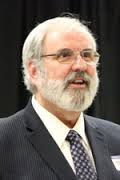In Defense of the Eternal Conscious Torment View of Hell


As I stated in my previous post, I'm going to host a dialogue on the
duration of hell between two able thinkers: Jerry Shepherd, who will argue for eternal conscious torment, and Chris Date, who will argue for annihilation. Here's the first essay by Jerry:
Introduction
My thanks to Preston Sprinkle for inviting me to participate in this exchange with Chris Date. And also my thanks to Chris for his expressed desire, which is mine as well, to have a very amicable discussion. This should actually not be hard, inasmuch as I have already gotten to know the heart of my brother through our communications the past few days. And besides, he’s Reformed. How could we not get along?!
The position which I will defend in this essay is what is sometimes referred to as the traditional, or eternal conscious torment, position (hereafter, ECT). My thesis is both positive and negative. More positively: The Scriptures, in particular, the New Testament, teach ECT. More negatively: As opposed to comments I have come across this past week, not only does the Bible not “clearly” teach Annihilationism or Conditional Immortality (hereafter, CI); it does not teach it at all. (On a side note, I call attention to the fact that recently, some proponents of CI have referred to their position as “Terminal Punishment,” which is quite ironic, in that Jesus refers rather to “eternal punishment.” This may result from some equivocation in the use of the terms, but it is ironic, nonetheless.)
My thesis is founded on three, roughly chronological, categories of evidence: The Old Testament, the Second Temple Jewish literature, and the New Testament. Space limitations preclude my dealing with a fourth area, the early church fathers. The following discussion will focus more on the NT data, and only summarily with the other two.
The Old Testament
Over the past few decades, there has been a more balanced and correct challenge to what was somewhat of a scholarly consensus throughout much of the twentieth century, that the OT had no real concept of an afterlife, and that it did not allow for a separation between soul and spirit at death. This more recent swing of the pendulum has rightly recognized that the OT does, in fact, assume some kind of conscious existence beyond the grave, and that objections to this understanding were based on a too-rigid understanding of OT anthropology. To be sure, the picture of this post-mortem existence is a murky one, as is the existence itself. But, briefly stated, the OT conception is that there is something of a person (soul, spirit, essence) which continues on post-mortem in a shadowy place referred to as sheol. Both the righteous and the wicked go there, and they are both in some stage of consciousness. The righteous are at rest, and the wicked are in a state of restlessness. What is important about this understanding is that it presents a significant challenge to the somewhat uncritically-examined thesis that later Christianity derived its understanding of the immortality of the soul from Platonic philosophy. Rather, later Christianity’s understanding is rooted in the NT which was itself rooted in the OT, and did not have to be borrowed from Hellenistic culture. Additionally, certain OT descriptions of the wicked dead in sheol are at least consonant with, and perhaps anticipatory of, a concept of eternal torment.
Second Temple Jewish Literature
I would argue that the preponderance of the evidence from the Second Temple Jewish literature (Apocrypha, Pseudepigrapha, Qumranic documents, Rabbinic literature, etc.) portrays the punishment/torment of the wicked as enduring endlessly without termination. Among the writings from this time period which give this portrayal are: Judith, 1 Enoch, 2 Enoch, the Sibylline Oracles, Wisdom of Solomon, Josephus’s Jewish Wars, the Qumran scroll of the books of Samuel, the Testaments of the Twelve Patriarchs, Jubilees, 4 Maccabees, 2 Ezra, and 4 Ezra. Interestingly, passages from some of these documents are used by CI advocates to argue for their position. But when I look at the passages they cite, it seems to me that often they are over-interpreting particular words or phrases as evidence of finality or annihilation, and that the texts could be read just as plausibly, and sometimes even more so, as supportive of ECT. This ambiguity, however, is not present in the passages which explicitly refer to the enduring nature of the torments. An important take-away from this phenomenon is that the same texts which use words like, “death,” “perish,” and “destroy” to describe the fate of the wicked can also talk about that fate in terms that clearly reflect ECT. It seems to me, then, that a principle emerges, which should also be applied in the reading of NT texts: Descriptions of ECT, which are for the most part given in longer descriptive phrases, clauses, and sentences, should take hermeneutical precedence over CI arguments that are for the most part based on an overly literal reading of individual lexical terms.
The New Testament
There are a number of passages in the NT that could certainly be understood, on a surface or more literally-oriented reading, as indicating that the punishment of the wicked will have a termination point, a finality, an extinction. Words like “kill,” destroy,” destruction,” and “perish” could be taken as indications of this. But here are several reasons as to why I think this understanding is inadequate.
(1) First, again, a restricted lexical or etymological focus on “destruction” words is unwise, especially in light of passages that would seem to qualify the literal understanding of these terms. It is entirely possible for words like “destroy” or “kill” to be used in ways that are less than literal, and I would argue that these other, fuller, NT passages demonstrate this to be the case.
(2) This restricted lexical or etymological focus is also deficient in light of the fact that the sphere for which these terms are being used in the NT is an other-worldly one, as opposed to this present existence. “Destroy” and “destruction” may not have the same finality to them, with regard to the eternal state, as when they are used to refer to temporal states. This is where the OT teaching is especially important. The inhabitants of sheol are those who have been killed/destroyed; they are dead. Nevertheless, they still have conscious existences in sheol as, what might be termed, “living corpses.” In the NT development of sheol, i.e., hades, Abraham, the rich man, and Lazarus are dead, and yet still have conscious existence in an otherworldly state. We should understand that this is certainly a real possibility for gehenna, “hell,” as well. “Death,” “destruction,” and the “second death” should not automatically be taken as references to a non-existence, or an unconscious existence.
(3) In conjunction with the last point, passages which describe other-worldly destruction in the NT, and draw on OT imagery of this-worldly destruction to do so, should not be understood to be conceptually limited by that usage. For example, when, in Mark 9:48, Jesus draws on the imagery of Isaiah 66:24 to describe eternal destruction, our understanding of what this destruction means should not be limited by the context of the Isaiah passage, which is a this-worldly one. By the same token, I might add, the portrayal of the new heavens and the new earth in Isaiah 65, while informing NT portrayals, should, of course, not be used to limit the NT understanding of eternal life. It would be wrong, in other words, to argue that because Isaiah 65 talks about people in the new heavens and the new earth living a long time, but nevertheless ultimately dying, we should therefore limit our understanding of what eternal life means in NT passages which draw on that imagery.
(4) Taking into account the points above, when, in Matthew 25:46, Jesus talks about “eternal punishment” versus “eternal life,” it seems to me illegitimate to argue that the two phrases should be regarded as operating on two different planes. “Eternal” means the same thing in both phrases”; i.e., everlasting. And “punishment” and “life” are two continuing states having to do with conscious individuals. Consciousness does not cease in the one case but go on in the other. “Eternal punishment” is not the death that results from having been punished; it is the ongoing active punishment of one who continues to be sensate.
(5) Passages that refer to punishment in gehenna, “hell” and refer to how “their worm does not die” and how the “fire is not quenched” are using these phrases to indirectly refer to this conscious existence. It seems terribly banal to suggest that when Jesus makes these pronouncements about eternal destinies, pronouncements which have such gravitas to them, that these phrases then only refer to what continues to happen in hell after a person has been annihilated or become non-existent. Even in a passage like Isaiah 66:24, where there is mention of corpses, it is entirely likely that the ensuing description of worms that do not die and fire that is not quenched is meant to evoke a picture of the conjunction of this world and the netherworld, and that the corpses are in fact “living corpses.” Even in the apocryphal book, Judith, the passage in 16:17 uses the fire and worm imagery in conjunction with the idea of conscious torment: “they shall weep in pain forever.” The mention of the same in Mark 9:48 is meant to evoke this conjunction as well.
(6) Finally, at least for this essay, it seems entirely clear to me that in Revelation 14:9-11, which refers to those who have worshiped the beast, that when it is said that the “smoke of their torment will rise for ever and ever,” and that for them “there will be no rest day or night,” that this is referring to eternal conscious punishment. And when, in Revelation 20, we read that the devil, the beast, and the false prophet are thrown into the lake of fire, where they will be “tormented day and night for ever and ever,” that this lake of fire is the “second death,” and that anyone whose name was not found in the book of life was thrown into the same lake—it is incredibly difficult to think that what is being talked about is not eternal conscious torment. And it certainly seems that these descriptions should take hermeneutical precedence over against arguments that are more narrowly based on a literal understanding of lexical terms like “death” and “destruction.”
Conclusion
It’s amazing how one can so quickly use up, and even go beyond, one’s allocation of 1500 words. There are, of course, so many more things that could have been said, and so many more arguments, and supports for those arguments, that could have been presented, and so many more nuances that could have been made. Again, my thanks to Preston for inviting me to engage in this discussion. I look forward to reading Chris’s contribution and to our continued dialogue.





